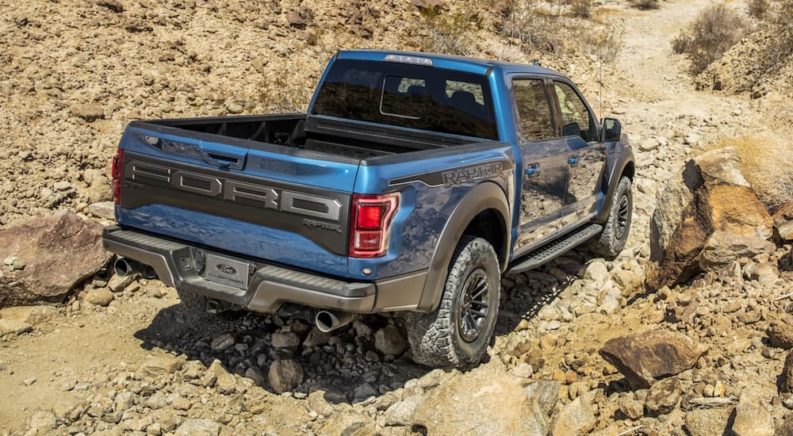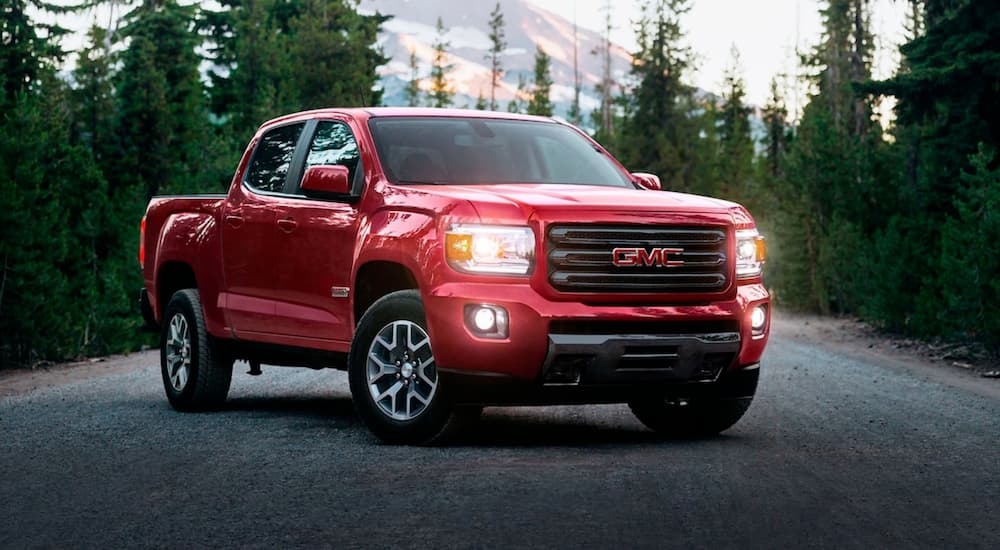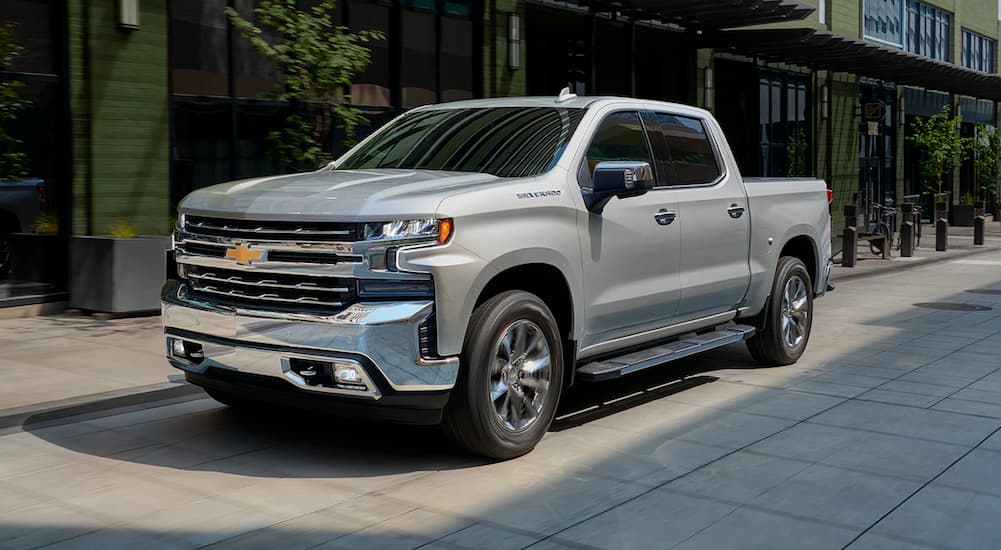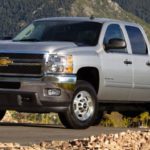While the return to normalcy following the global pandemic was welcomed with enthusiasm, there was another issue that, while not as dangerous or life-threatening, hindered the pursuit of a better quality of life. This came in the form of a worldwide microchip shortage. Vehicles are more complex than they’ve ever been, with many having onboard computers and a variety of sensors to elevate features related to performance and safety. The microchip shortage limited the production quotas and features across the scope of the entire industry.
As a result, many people took to purchasing used vehicles due to the unavailability of certain features in new models. This is why we’re here today, offering four examples of trucks that retain excellent resale value. This way, you can make an excellent choice regarding your next investment. So the next time you ask yourself, “Is there a used car dealer near me?” you’ll have a better idea of what you might want to get behind the wheel of when beginning your search for a reliable used truck.
The GMC Canyon
The sibling of the Chevy Colorado, which was the heir apparent to the Chevy S-10, the GMC Canyon is a truck that might be on the smaller side of the spectrum, but it manages to deliver the same results as its larger counterparts. With more recent models offering multiple powertrain options, such as a turbocharged four-cylinder, a beefy V6, and polished Duramax diesel, the Canyon has proven to be one of the most refined trucks on the market. Dressed up with the right amount of sophistication, the interior cabin has more in common with a luxury sedan than a workhorse. Because of its higher-than-average quality, the GMC Canyon retains its starting value for quite a few years after it hits the marketplace. After a five-year period, the Canyon retains over 83% of its original value. The yearly cost to maintain the Canyon stays below $1,000 for six years, at which time its resale value still retains over 74% of its starting price.
The Ford F-150
For many truck owners, the debate rages on between the Ford F-150 and the Chevy Silverado 1500. Which one is better? While the answer mostly comes down to subjection and brand loyalty, we can confidently say that the F-150 has always been a good choice when it comes to investing in a reliable workhorse. Utilized by workers and off-roaders alike, the F-150 has made use of several powertrains that adhere to the needs of just about any driver. The most well-known of these is the “Coyote,” a 5.0L V8 that can tackle the odds with ease.
Remarkable, the F-150 retains 70% of its original value for the first six years of ownership. Perhaps, even more remarkable is that it manages to stay above half for the first nine years; with routine service at regular intervals, you can always count on Ford to go the extra mile for you; several times over. Yearly maintenance costs for the F-150 are remarkably low for a vehicle of its size, staying under $1,000 for the first six years. In this same time period, the probability of needing a major repair stays relatively low at slightly over 16%. A worthwhile investment if there ever was one.
The Toyota Tundra
There’s no doubt that the pickup truck has become one of the defining characteristics of Americana, much in the same way that baseball and apple pie has. While Ford and Chevy are synonymous with the vehicle, the overseas manufacturers have been just as adept at crafting their own incarnations. Case in point; the Toyota Tundra. Toyota has always been a standard-bearer for unsurpassed quality and safety standards. The Tundra is what happens when they apply those same principles to the pickup, and the vehicle’s ability to retain its resale value speaks for itself.
After five years of ownership, the Tundra maintains over 72% of its original cost and, even after eight years, retains over 60%. Toyota has long been renowned for its ability to go the extra mile in terms of its sustainability when properly maintained. The yearly cost of routine service stays relatively low, with the total cost not surpassing the $1,000 threshold until its ninth year of ownership. At that same time, the probability of a Tundra needing a sizable repair barely eclipses 15%. Because this is far better than the industry average, it’s easy to see why purchasing a used Tundra might be one of the best investments you ever make.
The Chevy Silverado 1500
Similar to the Ford F-150 that we mentioned earlier, the Chevy Silverado 1500 has been competing against Ford’s flagship product since 1999, when the Silverado debuted to thunderous acclaim. And while the F-150 has its 5.0L V8 that’s gained a reputation of its own throughout the years, Chevy has led the charge in reestablishing the diesel-fueled engine as a viable commodity. We took some time earlier to look at the F-150’s retention and maintenance costs, so not we’ll do so for the Silverado 1500.
The ability of the Silverado 1500 to retain its value for a considerable length of time is quite remarkable. After a period of four years, it retains 80% of its starting cost. Even at seven years, it barely drops below the 70th percentile, and this decrease is much slower than average, as it only drops down to just below 65% after eight years on the road. Repair costs can be considered average for the Silverado, and as we’ve previously mentioned, having service performed at regular intervals is how you recoup a return on your investment. Annual repair costs stay below $1,000 for the first six years of ownership; in this period, there is a 16% chance that your Silverado will require some repairs outside the realm of routine service.
Make a Used Vehicle Work for You
The one thing about the depreciation that all used vehicles experience is that there are two ways in which you can make the process work for you. For those who think of vehicle shopping for the short term, a vehicle that’s a few years older and that’s undergone a decent amount of depreciation can mean getting a vehicle at a lower cost for a short duration. Today, we’ve examined the second way depreciation can be taken advantage of. As we saw, not every vehicle retains the same amount of value over the years. The vehicles we chose to spotlight here today are examples of value retention.
These vehicles are less about purchasing and more about making an investment. The ones that retain their resale value usually do so because of the quality that they can sustain for multiple years. These trucks can be purchased used and still have enough under the hood to go the extra mile for you. While we covered maintenance and residual value, you might have noticed that insurance premiums were absent. This is because insurance varies a great deal depending on the carrier, driver, and state you live in. We hope the information presented here today is something you’ll find helpful in the pursuit of making a used vehicle work for you and getting the most out of your purchase.






